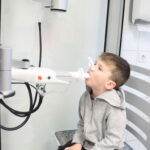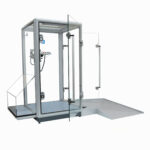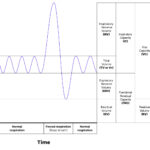Understanding Residual Volume (RV) in Respiratory Physiology
Residual Volume (RV) is a critical measure in respiratory physiology, representing the amount of air remaining in the lungs after a maximal exhalation. This volume is essential for understanding lung function, diagnosing respiratory conditions, and managing patient care. Here, we explore what RV is, how it is measured, and its clinical significance.
What is Residual Volume (RV)?
Residual Volume (RV) is the volume of air that remains in the lungs after a person has exhaled as fully as possible. This air cannot be expelled from the lungs, ensuring that the alveoli (air sacs) remain open and capable of gas exchange between breaths. RV is a component of Total Lung Capacity (TLC), which also includes Tidal Volume (TV), Inspiratory Reserve Volume (IRV), and Expiratory Reserve Volume (ERV).
Measuring Residual Volume
Accurate measurement of RV is crucial for assessing lung function. Several methods are used:
1. Helium Dilution Technique
In this method, a known concentration of helium is inhaled from a closed system. Since helium is inert and does not absorb into the bloodstream, changes in its concentration help calculate RV. The technique requires the assumption that helium distributes evenly in the lungs.
2. Body Plethysmography
Body plethysmography involves the patient sitting in a sealed chamber and breathing through a mouthpiece. The patient pants against a closed shutter, causing pressure changes that help calculate Thoracic Gas Volume (TGV), which approximates RV.
3. Nitrogen Washout Technique
This technique involves breathing 100% oxygen to flush out nitrogen from the lungs. By measuring the volume of nitrogen exhaled, RV can be estimated. This method is less commonly used compared to helium dilution and body plethysmography.
Clinical Significance of RV
Understanding and measuring RV provides valuable insights into respiratory health:
Assessment of Lung Function: RV is critical for evaluating lung function. An increased RV may indicate air trapping seen in obstructive lung diseases like COPD and asthma. A decreased RV may be associated with restrictive lung diseases.
Diagnosis of Respiratory Conditions: Abnormal RV levels can help diagnose conditions such as emphysema, where RV is often increased due to air trapping, or pulmonary fibrosis, where RV may be decreased due to reduced lung volumes.
Monitoring Disease Progression: Regular RV measurements are essential for monitoring the progression of chronic lung diseases and assessing the effectiveness of treatments.
Pre-Surgical Evaluation: RV measurements are important in pre-operative assessments to evaluate a patient’s respiratory reserve and predict potential surgical risks.
Conclusion
Residual Volume (RV) is a vital aspect of respiratory physiology, providing key insights into lung function and health. Accurate measurement of RV helps in diagnosing and managing respiratory conditions, evaluating treatment effectiveness, and preparing for surgeries. Understanding RV is essential for effective respiratory care and advancing patient outcomes.




